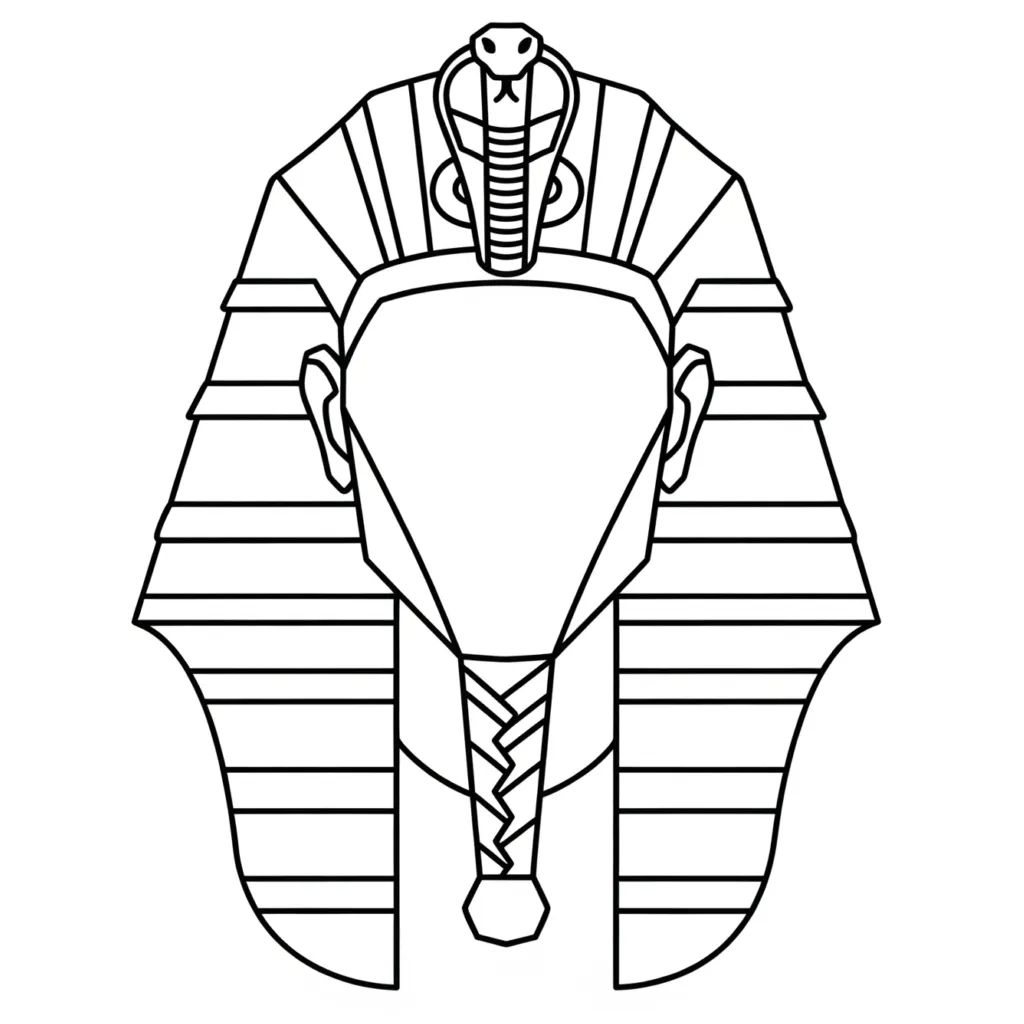
In ancient Egypt, the cobra — known as the uraeus — rose proudly from the brow of the pharaoh’s headdress, hood flared and poised to strike. This was no mere decoration. The cobra represented Wadjet, the protective goddess of Lower Egypt, a divine guardian who signalled the pharaoh’s sacred authority and power.
Far beyond politics or ritual, the cobra (snake, serpent) symbolised something profound: the ruler’s power was not just outward but arose from a deep, inner mastery. The cobra on the forehead was a visible emblem that true authority flows from within — from imagination, awareness, and conscious assumption.
Egypt and the Outer World of Appearances
In biblical symbolism, Egypt often represents the realm of the senses, the world of appearances that seems solid and real but is actually a reflection — a shadow — of the inner mind. To rise above Egypt is to rise above outer evidence, doubt, and limitation.
The cobra’s position on the pharaoh’s brow marks this mastery. It signifies a state of vigilance and power over the senses — a ruling from the “mind’s eye” that does not bend to outer circumstance or fear.
"..Do you not know that friendship with the world is enmity with God?.." — James 4:4
The Forehead: The Seat of Inner Truth
The Bible instructs believers to bind truth on their foreheads:
“Tie these words as a sign on your hand, and let them be as frontlets between your eyes.” — Deuteronomy 6:8
This is not a call for literal decoration but a metaphor for fixing the truth — the “I AM” — at the centre of consciousness. Like the cobra guarding the pharaoh’s forehead, this truth stands watch, protecting the mind’s eye from the distractions and deceptions of the outer world.
The Birth of Doubt: The Serpent in Eden
Before the serpent appeared in the Garden of Eden, manifestation was effortless — an unfolding of reality from pure imagination without resistance or contradiction. Adam and Eve lived in unity with their inner power, creating from awareness alone.
The serpent’s arrival introduced a new awareness: the possibility of doubt, choice, and separation from that effortless flow. It marked the awakening of imagination as a double-edged sword — the source of both creative power and limitation.
“You will be like God, knowing good and evil.” — Genesis 3:5
"For God doth know that in the day ye eat thereof, then your eyes shall be opened, and ye shall be as gods, knowing good and evil." — Genesis 3:5 KJV
This moment inaugurated the journey of conscious imagination — the recognition that inner vision can create or deceive, heal or harm. The story of the cobra and later biblical serpents traces the path back to mastery, the reclaiming of inner authority beyond outer appearances.
The Serpent as Power in Motion
When Moses and Aaron confronted Pharaoh, Aaron’s rod transformed into a serpent:
“He threw down his rod, and it became a snake.” — Exodus 7:9-10
This was no trick but a symbol of living assumption — a fixed inner state made real and active before the forces of outer opposition. The serpent here is the power of imagination manifesting visibly, boldly standing in the presence of doubt and resistance.
Looking Upward for Healing
In the wilderness, those bitten by venomous serpents were healed by looking to a bronze serpent lifted on a pole:
“Make a snake, and put it on a pole; and anyone bitten, when he sees it, shall live.” — Numbers 21:8-9
This lifted serpent parallels the cobra’s elevated place on the pharaoh’s crown. Healing and victory come not from avoiding the serpent but from raising the gaze — fixing the attention on inner truth, rather than the “bite” of external trials.
Mastery and Harmony: The Serpent No Longer a Threat
Isaiah’s vision of peace reveals a world where the serpent is no longer feared:
“The nursing child shall play by the hole of the cobra, and the weaned child shall put his hand on the adder’s den.” — Isaiah 11:8
This is the final mastery — where imagination is fully harmonised, and power is exercised with wisdom and confidence. The serpent becomes a companion, a symbol of energy controlled and peace achieved.
The Seal of Inner Authority
In Revelation, the faithful are marked with a seal on their foreheads:
“And I saw the servants of God, and they were sealed on their foreheads.” — Revelation 7:3
This seal, like the cobra, is a sign of inner mastery — a mind fixed on truth, unshaken by the illusions of the outer world.
The Cobra’s Enduring Lesson
Through these images, the cobra on the pharaoh’s brow emerges as a powerful symbol of ruling from within. It reminds us that the world around us is but the shadow of our imagination — ever shifting, ever dependent on the inner state we inhabit.
The true ruler is the one who governs from the mind’s eye, ready to strike down any doubt or limiting belief, standing firm in the power of conscious creation.
